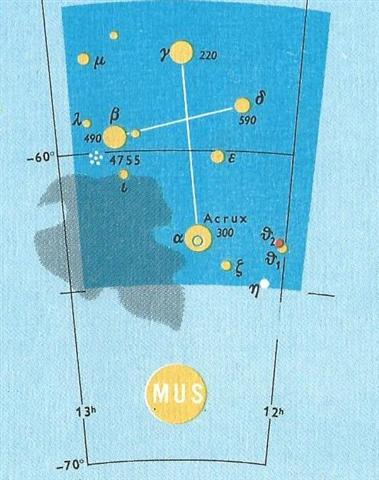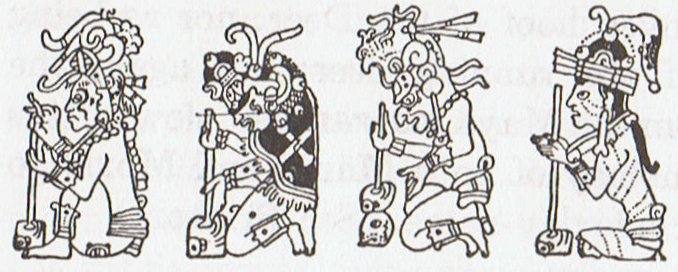Counting beyond the first glyph in line Gb7 - which could represent a fraction as the final of the previous cycle - to the end of side b there are 60 glyphs (days) and the first of these ought to have corresponded to the night when the Full Moon reached Acrux: 
According to the Gregorian calendar the Sun would have risen with Acrux 183 days after 0h (equal to the glyph number counted from Gb1-1), but in rongorongo times the correct star day would have been 4 days later, in September 24 (*187). There were 60 days needed beyond Gb7-2 in order to reach the beginning of side a, where we can imagine the young Sun would have used his egg tooth to emerge from his closed confinement:
These 60 days of confinement could have corresponded to the first 3 vinal (20-day) months in the Mayan calendar, which were illustrated with 'prison bars' across.
Although the number of dark creation nights could have been 5 + 60 = 65:
... Nut, whom the Greeks sometimes identified with Rhea, was goddess of the sky, but it was debatable if in historical times she was the object of a genuine cult. She was Geb's twin sister and, it was said, married him secretly and against the will of Ra. Angered, Ra had the couple brutally separated by Shu and afterwards decreed that Nut could not bear a child in any given month of any year. Thoth, Plutarch tells us, happily had pity on her. Playing draughts with the Moon, he won in the course of several games a seventy-second part of the Moon's light with which he composed five new days. As these five intercalated days did not belong to the official Egyptian calendar of three hundred and sixty days, Nut was thus able to give birth successively to five children: Osiris, Haroeris (Horus), Set, Isis and Nepthys ... Among my early investigations the following could be relevant: ... Actually, when still young, this Vogulian 'World-observing Man' - Avalokiteshvara himself, this great and worshiped deity of Buddhist countries - was, like Kullervo, a much-plagued orphan, first in the house of his uncle [Pop], then in the house of 'the Russian' [Uo] and in that 'of the Samoyed' [Zip]. After years of misery - quite specific 'measured' misery - he kills all his tormentors. The revenge he takes is for himself. His father, who had lowered down the beloved son from the sky in a cradle, remains aloft ... From this I conclude: The man who observes the whole world is the sun. When he is young he has to be inside 3 houses (i.e. he cannot be seen). Each house represents a month. His uncle owns the first month. I.e. the old one is still in rule. Then the rule of his uncle is over and he moves to the house of 'the Russian': ... in the house of 'the Russian' he is kept in the door hinge (in the English translation this and other details are blurred to insignificance), and dishwater is emptied upon him. To be damned to play door hinge is one of the hellish punishments in Egypt, because the hinge is supposed to turn in the victim's eye ... (Hamlet's Mill) The door hinge clearly refers to the time of Janus. If December is the month still ruled by his uncle, then January will be the house of the Russian. Moreover, drilling in the eye should mean creating new fire, i.e. quite in agreement with what we can read at the beginning of the 2nd of the 3 months at the end of side a:
... 'Then', declared Odysseus, I thrust in that stake under the deep ashes, until it should grow hot, and I spake to my companions comfortable words, lest any should hang back from me in fear. But when that bar of olive wood was just about to catch fire in the flame, green though it was, and began to glow terribly, even then I came nigh, and drew it from the coals, and my fellows gathered about me, and some god breathed great courage into us. For their part they seized the bar of olive wood, that was sharpened at the point, and thrust it into his eye, while I from my place aloft turned it about, as when a man bores a ship's beam with a drill while his fellows below spin it with a strap, which they hold at either end, and the auger runs round continually ... |
|||||||||||||||||||||||||||||||||||||||||||||||||||||||||||||||||||||||||||||||||||||||||||||||||||||||||||||||||||||||||||||||






















